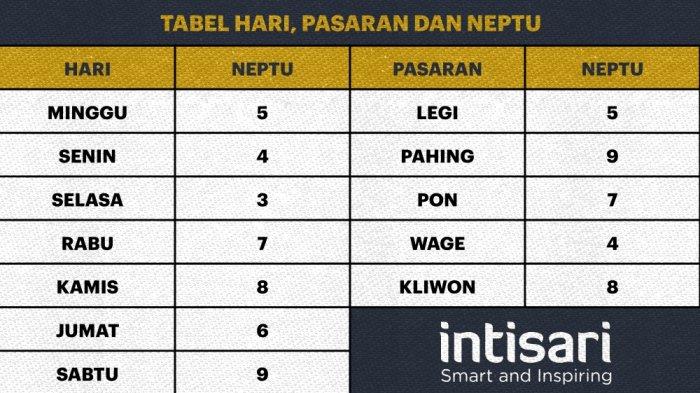Analyzing The Economic Data: Where's The Trump Effect?

Table of Contents
Job Growth Under Trump: A Closer Look
Analyzing the Numbers
The Trump administration often touted strong job growth as a key achievement. Analyzing the numbers from the Bureau of Labor Statistics (BLS) reveals a mixed picture. While job creation was indeed positive during his term, comparing it to previous administrations requires context.
- Average monthly job creation: The average monthly job creation under Trump was comparable to, and in some periods slightly higher than, the Obama administration. However, the pre-pandemic economy experienced a significant surge in job growth. The pandemic significantly impacted job growth during the final year of his presidency.
- Unemployment rate: The unemployment rate did fall to a 50-year low before the pandemic hit, reaching levels not seen since the 1960s. However, this decline began before Trump took office and continued a trend already in motion.
- Sectoral variations: Job growth was not uniform across sectors. While some sectors saw significant gains, others experienced stagnation or decline due to factors like automation and global trade shifts.
It's crucial to remember that job growth is influenced by many factors beyond presidential policies. Technological advancements, global economic conditions, and demographic shifts all play significant roles. Attributing job creation solely to the "Trump effect" would be an oversimplification.
Assessing the Quality of Jobs
While job numbers offer a broad picture, the quality of jobs created is equally important. Were these high-paying, sustainable positions, or primarily low-wage, temporary roles?
- Median wage growth: Wage growth during the Trump years was modest, lagging behind productivity growth in several sectors. This suggests that while jobs were created, the increases in real wages for many workers were not substantial.
- Job security and benefits: Data on employee benefits and job security is less readily available for immediate analysis, however research suggests that the quality of jobs created varied significantly across sectors.
A complete assessment of the "Trump effect" on job growth necessitates a nuanced understanding of both quantity and quality. The creation of jobs alone doesn't automatically translate to improved economic well-being for all Americans.
The Impact of Trump's Tax Cuts
Short-Term Economic Stimulus
The 2017 Tax Cuts and Jobs Act significantly lowered corporate and individual income tax rates. Proponents argued this would stimulate economic growth.
- GDP growth: Following the tax cuts, GDP growth experienced a temporary surge. However, determining the direct causal link between tax cuts and GDP growth is challenging due to the presence of other factors such as global economic activity.
- Corporate investment: While some evidence suggests increased corporate investment, the effect was not as dramatic as initially projected. Many companies used the tax savings for stock buybacks and increased dividends rather than significant investments in new projects.
- Consumer spending: Consumer spending did rise after the tax cuts. However, this could also be attributed to factors other than the tax cuts themselves.
Long-Term Implications
The long-term consequences of the 2017 tax cuts remain a subject of debate.
- National debt: The tax cuts significantly increased the national debt, raising concerns about long-term fiscal sustainability. The reduced government revenue made it harder to address other pressing economic and social issues.
- Income inequality: The tax cuts disproportionately benefited high-income earners, potentially exacerbating income inequality. Critics argued that the tax cuts failed to address the underlying issues leading to income inequality.
The long-term implications of Trump’s tax cuts underscore the complexity of evaluating economic policies, and the need to consider both short-term gains and long-term consequences.
Trade Wars and Their Economic Fallout
Impact on Specific Industries
Trump's trade policies, including tariffs on imported goods, significantly impacted various US industries.
- Agriculture: Farmers faced retaliatory tariffs from other countries, causing significant financial hardship for many.
- Manufacturing: Some manufacturers benefited from tariffs protecting their domestic markets, while others faced higher input costs due to increased tariffs on imported materials.
- Technology: The tech sector felt the impact of trade disputes, with disruptions to supply chains and increased uncertainty.
The overall impact on specific industries was complex and varied widely depending on the sector and its global interconnectedness.
Global Economic Implications
Trump's trade policies had broader global consequences.
- Retaliatory tariffs: Other countries imposed retaliatory tariffs on US goods, leading to a trade war that disrupted global supply chains and harmed international trade relations.
- Disruptions to supply chains: Tariffs and trade disputes created uncertainty and disruptions in global supply chains, increasing costs for businesses.
- Damage to international cooperation: The "America First" approach strained relationships with key trading partners, potentially undermining long-term economic cooperation and global stability.
The economic fallout from Trump's trade wars extended far beyond the United States, highlighting the interconnected nature of the global economy.
Regulatory Changes and Their Economic Effects
Deregulation and its Impact
The Trump administration pursued a policy of deregulation across various sectors.
- Environmental regulations: Relaxing environmental regulations had potential short-term economic benefits for some industries, but raised concerns about long-term environmental costs and potential health impacts.
- Financial regulations: Easing financial regulations aimed to boost economic activity, but also raised concerns about increased financial risk and potential instability.
The economic consequences of deregulation are difficult to isolate and quantify, often requiring long-term observation.
The Role of Government Spending
Government spending under the Trump administration influenced economic growth and infrastructure development.
- Military spending: Increased military spending had a direct stimulative effect on certain sectors, particularly defense contractors, but diverted funds from other potential areas of investment.
- Infrastructure investment: Despite promises of substantial infrastructure investment, actual spending fell short of expectations, limiting the potential impact on economic growth and job creation.
Assessing the impact of government spending requires an analysis of both its allocation and its effectiveness in achieving intended goals.
Conclusion
Analyzing the "Trump effect" on the economy reveals a complex picture. While some policies, such as tax cuts, resulted in short-term economic gains, they also raised long-term concerns about fiscal sustainability and income inequality. Job growth was positive but needs further analysis regarding the quality of jobs created. Trade policies caused disruptions and uncertainty, negatively impacting some sectors while offering potential benefits to others. Regulatory changes created mixed consequences, with deregulation potentially boosting some sectors but increasing long-term risks in others. Attributing specific economic outcomes solely to presidential policies is an oversimplification. Numerous other factors influence economic performance.
To gain a deeper understanding of the long-term effects of these policies, continue researching the economic data and forming your own informed conclusions about the true "Trump effect." Analyzing various datasets from reputable sources such as the Bureau of Labor Statistics and the Congressional Budget Office is crucial for a comprehensive evaluation.

Featured Posts
-
 2024 Milwaukee Brewers Roster Players To Miss And Players To Forget
Apr 23, 2025
2024 Milwaukee Brewers Roster Players To Miss And Players To Forget
Apr 23, 2025 -
 Ice Blocks Father From Meeting Newborn Son Mahmoud Khalils Case
Apr 23, 2025
Ice Blocks Father From Meeting Newborn Son Mahmoud Khalils Case
Apr 23, 2025 -
 Yankees Historic Night 9 Home Runs Judges Triple Power Display
Apr 23, 2025
Yankees Historic Night 9 Home Runs Judges Triple Power Display
Apr 23, 2025 -
 Apakah Senin Legi Dan Rabu Pon Cocok Berdasarkan Ramalan Primbon Jawa
Apr 23, 2025
Apakah Senin Legi Dan Rabu Pon Cocok Berdasarkan Ramalan Primbon Jawa
Apr 23, 2025 -
 Bangkitkan Semangat 350 Kata Inspirasi Hari Senin Yang Memotivasi
Apr 23, 2025
Bangkitkan Semangat 350 Kata Inspirasi Hari Senin Yang Memotivasi
Apr 23, 2025
